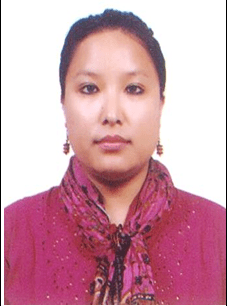
- longjam@cusb.ac.in
- longjam.kabita@gmail.com
- :
Started teaching as an assistant professor in the Central University of South Bihar from the year 2020 onwards in the department of Geology under the Earth, Biological and Environmental Sciences CUSB, Gaya.
Teaches Igneous Petrology & Geochemistry of mafic/acidic rocks include geochemical data interpretation and analyses in Department of Geology as a guest faculty in the University of Delhi. Postdoctoral experience in the title “Geochemical and isotopic studies of mafic rocks from Nagaland-Manipur Ophiolite Belts: Constraints on magmatic evolution and tectonism in North-Eastern India” in the Department of Geology, University of Delhi.
The various tectonic activities since the Archean in the CITZ caused rifting, volcanism, compression, addition of magmatic material from the lower crust/mantle, and partial melting of the older continental crust. The collisional suture between the Bundelkhand craton (north of SNNF) and the Bastar craton (south of CIS) is marked by the high‐pressure granulites of the Ramkona–Katangi and Nagpur–Bhandara–Balaghhat belts, shown as black patches in the Tirodi basement gneiss along the GTSZ and CIS. The Khairagarh volcano‐sedimentary sequence is exposed along the Kotri–Dongargarh Belt towards the north‐eastern part of the Bastar Craton. This sequence is exposed south of the Central Indian Shear (CIS) and east of the Sakoli Group rocks. The Khairagarh volcanic sequence is represented by low‐Ti, intermediate‐Ti and high‐Ti basalt–basaltic andesite series that probably represent varying degrees of partial melting of an enriched mantle source, thus they appear to be consanguineous. These rocks are associated with a sequence of high magnesium andesitic (HMA) rocks that follow a separate evolutionary trend, thus they appear not to be related to the basalt–basaltic andesite sequence. The presence of the two contrasting sequences probably indicates generation in a hot Andean‐type subduction zone for the HMA, and Andean‐type back‐arc rifting for the basalt–basaltic andesite samples. The possibility of a relatively thick crust around 3.6 Ga in the Bastar Craton and the Amgaon Gneissic Complex, basement for the Khairagarh–Sakoli sequence, probably indicates that it was part of the Supercontinent Ur. The mantle extraction age of about 2.9 to 2.5 Ga, based on the Nd‐model ages for the Khairagarh–Sakoli sequence, probably indicate that this part of the Central Indian Shield became part of the Supercontinent Columbia subsequently.
| SI No. | Journal name/Title | Author’s name | Vol., page and year | Impact factor |
|---|---|---|---|---|
| 1 | GEOLOGICAL JOURNAL Geochemical characterization and petrogenesis of Proterozoic Khairagarhvolcanics: implication for Precambrian crustal evolution. | Kabita C. Longjam and Talat Ahmad | 47: 130-143. Year-2012 | 2.9 |
| 2 | ISLAND ARC Petrogenesis and tectonic setting of bimodal volcanism in the Sakoli Mobile Belt, Central Indian shield. | Talat Ahmad, KabitaC.Longjam, BaishaliFouzdar, Mike J. Bickle and Hazel J. Chapman 2009. | 18: 155-174. Year- 2009 | 1.6 |
- Awards:
- DST (WOS-A) award fellowship from 2014- 2017.
- CSIR (Direct SRF) award fellowship from 2010-2012.
- UGC (CAS) meritorious fellowship 2007-2009.
- University topper in B.Sc. Geology Honours examinations
- Projects:
Women Scientist Scheme (WOS-A)
Project funded by Department of Science and Technology (DST), New Delhi
Title: Geochemical and isotopic studies of mafic rocks from Nagaland-Manipur Ophiolite
Belts: Constraints on magmatic evolution and tectonism in North-Eastern India.
| Sl No. | International/National conference | Title | Author’s name | Page, date,year and venue |
|---|---|---|---|---|
| 1 | In 35thIGC (International Geological Congress) | Geochemical characterization and petrogenesis of Proterozoic Khairagarh Volcanics and the Sakoli Mobile Belt; Bastar Craton, Central Indian shield: implication for Precambrian crustal evolution. | Kabita C. Longjam and Talat Ahmad | 27th August to 2nd September 2016, Cape Town, South Africa. |
| 2 | National Seminar on “Dynamics of Surface and Subsurface Geological processes” | Geochemical and Isotopic studies of mafic rocks from the Nagaland-Manipur Ophiolite Belts: constraints on magmatic evolution and tectonism in Northeastern India. | Kabita C. Longjam and Talat Ahmad | P-11,8-9 February 2018,PondicherryUniversity, Puducherry, India. |
| 3 | AOGS (Asian Oceania Geosciences Society) | Geochemical characterization of Proterozoic Khairagarh volcanic: constraints on magma tectonics. | Kabita C. Longjam and Talat Ahmad | P-286, 5 to 9 July 2010, Hyderabad, India. |
| 4 | National Symposium on “Geology and Mineral Resources of Bundelkhand Craton (GMRB)” | Characterization of the proterozoic mafic magmatism in the Central Indian shield- constraints on crustal evolution. | Ahmad,T., Mishra, M.K., Kabita L.C., Alam,M., Joshi, K.B., Naushad, M.D., Devi, S.J., Dass, K.C., and Kumar, S. 2010. | P-17-18,8-10 October 2010, Jhansi (UP), India. |
| 5 | National Symposium on “Significant Milestones in the Growth of Geochemistry in India during the 50 years period: 1958-2008” | Geochemistry and petrogenetic study of basic volcanic of Khairagarh Group, Central India. | Kabita C. Longjam and Talat Ahmad | P-55-56, 20-22 February 2008, Hyderabad. |
| 6 | Third International Symposium on “Geological Anatomy of East and South Asia IGCP (International Geoscience Programme)- 516” | Geochemistry and petrogenetic study of basic volcanic of Khairagarh Group, Central India. | Kabita C.Longjam and Talat Ahmad | P-70, 8-14 October 2007, Delhi, India. |











